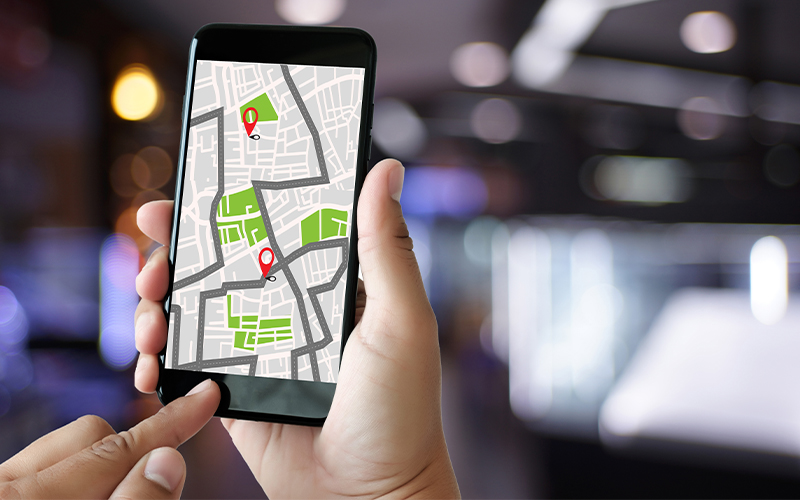Location intelligence reveals unique insights that can be helpful in current digital transformation era. Business decision makers have unprecedented trove of data, and putting data with the context of location makes it more informative. Location based data can be voluminous, and such data can be analysed in location platforms from GIS providers pertaining to desktop, web APIs and recent trend of low-code/no-code customized cloud-based GIS environments. When someone thinks of geospatial data analysis on layered location data, we always envision such data for demographics, traffic, economics, calamities, and natural resources. In fact, the applications of geospatial data services are vast today, across telecom, logistics, banking & financial services, and insurance industries. Insurance underwriters, for example, use GIS for their assets, policies, customers, and their proximity to hazards.
This sector has revolutionized with easy dissemination of location data to customers globally on web and GIS cloud environments to connect people, locations, and data using interactive smart maps. World over, location-based information providers and institutions allow their business users to access large volumes of map data and derive insights that support business decisions. The data provided by such players has moved beyond the typical latitude/longitudes, geocoding, routing, and navigation. Location data from customers’ mobile devices with their permission helps to understand consumer behaviour patterns and in turn assists in digital marketing. Map-based analytics reports assist in creating advertisements with specific characteristics for their target audience. This further gives customers a more improved ad experience with products more relevant to their desire and personal requirements.
Further, hybrid insights from location intelligence (LI) services are transforming operations across a wide swathe of industries. Here, LI analytics software sought location-specific data such as mobile network coverage, crowdsourced data, consumer behaviour data, smart sensors, or raster data to help businesses better understand why events are occurring as they are, and plan what to do next. The product of such analytics results in location- and map-based visualisations such as dashboards and digital twins.
In a striking example, telecommunications giant Vodafone created an immersive 3D digital twin of Britain (an area of 245,000 sq. km) using GIS technology. Teams at the company drill down into the details of this digital model to analyse signal propagation of their mobile network across the country. They are able to better plan network expansion with the twin, using real-time visualisations of new housing developments, sport events and shopping centres on the digital map. The benefits are many: the team acquired tree growth related datasets spanning many years and overlaid them into the digital twin, to model such interesting phenomena as tree growth across the country. Trees ‘clutter’ mobile signals, and there are seasonal changes in foliage that affect signals. The twin is populated with live data feeds from across the country, so it’s constantly updated.
The typical components of any effort to derive intelligence from location data are the GIS integrated systems, the large-volume datasets or databases, the web application programming interfaces (APIs) and field mobility. Many teams may be engaged in harvesting insights from the data using the APIs. With the demand for low-code/no-code increasing across map makers and data visualization customers, GIS providers are delivering custom web and mobile apps without code and 90% cost reduction, without deploying high profile developers. For example, one of the well-known GIS platforms, ESRI, has templates for story maps; ArcGIS AppStudio that provides low code and no code cross-platform apps to be published in app stores. GIS companies have transformed into Software-as-a-Service (SaaS) providers, giving users the ability to easily carry out satellite image-based analysis on large volume geospatial data from image sensors and UAVs using high-performance based deep learning, artificial intelligence, and computer vision algorithms.
This brings us to an interesting consideration: Geospatial data services and LI platforms that are homegrown in any geography offers some unique advantages.
- Local knowledge and insights: Such companies have a deep understanding of the local markets and geographies. Homegrown enterprises are well-versed in the nuances of the geo, including topography, demographics, and cultural norms.
- Access to niche data sources: Homegrown location intelligence companies gain access to data sources that may not be available to larger, more established companies, giving them a competitive advantage in terms of the quality and relevance of their insights. For example, they may have access to non-digital forms of local business data from the local press, or data that is in vernacular languages. Such data is usually not available to global or non-local players.
- Flexibility and agility: Like all startups, homegrown location intelligence players can easily pivot their offerings to meet the needs of their customers, without being encumbered by layers of bureaucracy and decision-making that multinational players may have.
- Customer-centric approach: Homegrown location intelligence platforms are often hyper-focused on serving the needs of their local customers. For instance, in a B2B model, they may be serving specific industries such as fisheries or aviation in a particular country. This means that they are more likely to have a customer-centric approach to product development that can result in products with USPs that better meet the needs of their target market.
- Cost-effective solutions: Homegrown geospatial data providers are smaller, and leveraging the benefits of technology, can provide more affordable pricing structures or more flexible payment options than larger, global providers with higher overhead costs.
- Robust staffing model: With homegrown domain personnel with GIS skillsets and industrial know-how, it becomes easier for local utilities, miners, urban infrastructures, and local governments to accept and deploy hybrid round-the-clock GIS operations with IT to meet key issues in city administration.
* For organizations on the digital transformation journey, agility is key in responding to a rapidly changing technology and business landscape. Now more than ever, it is crucial to deliver and exceed on organizational expectations with a robust digital mindset backed by innovation. Enabling businesses to sense, learn, respond, and evolve like a living organism, will be imperative for business excellence going forward. A comprehensive, yet modular suite of services is doing exactly that. Equipping organizations with intuitive decision-making automatically at scale, actionable insights based on real-time solutions, anytime/anywhere experience, and in-depth data visibility across functions leading to hyper-productivity, Live Enterprise is building connected organizations that are innovating collaboratively for the future.









